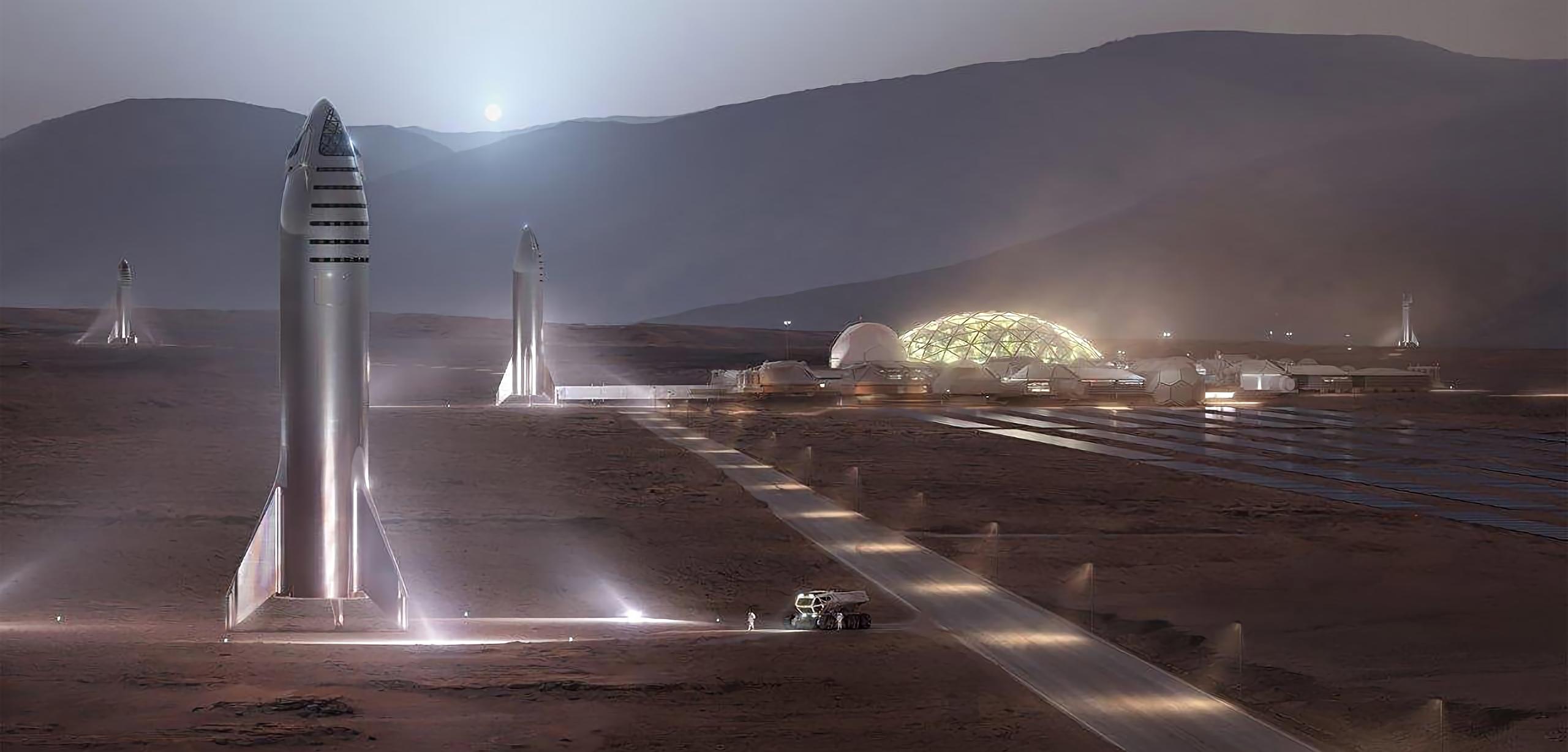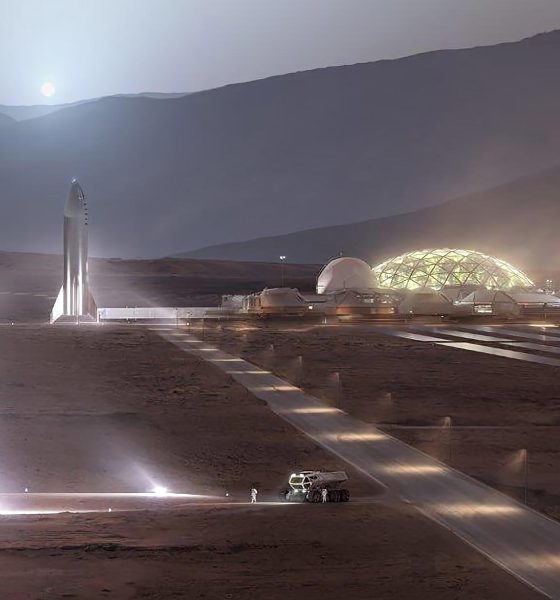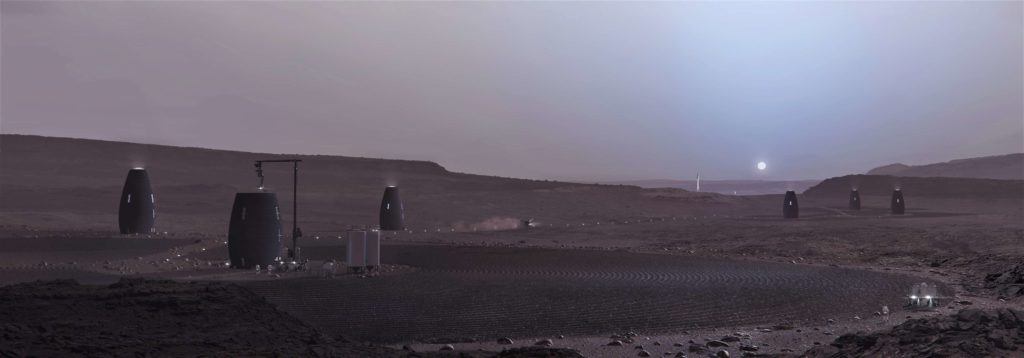

News
SpaceX acquires new photos of Starship landing sites with Mars-orbiting NASA satellite
SpaceX has reaffirmed its prioritization of the Arcadia Planitia – a low Martian plain – and adjacent areas as some of the most promising locations for early Starship landings, tasking a NASA satellite to gather updated photos of six potential landing sites.
First discovered and analyzed by author Robert Zimmerman on August 28th, SpaceX requested the landing site prospecting images from the University of Arizona, tasked with operating NASA’s JPL-built HiRISE spacecraft. Back before Red Dragon’s 2017 cancellation, SpaceX began the process of landing site analysis, a canvassing that ultimately settled on four possible locations, of which the Arcadia Planitia was viewed as most promising.
After at least 2.5 years of research, SpaceX thus appears to be confidently settling on one particular region of Mars for its first Starship landing(s) on the Red Planet. Located in Mars’ mid-northern latitudes, Arcadia Planitia – like its Latin namesake suggests – is a region of plains, specifically low plains per International Astronomical Union (IAU) standards. It has been described by NASA as “one of the few regions [of Mars] where abundant shallow ice is present at relatively low latitude”, desirable for an array of reasons.

Arcadia Planitia takes up much of the left-hand side of this spectacular 2017 panorama, stitched together from Mars Express images by Justin Cowart. On the scale of Martian spectacle, one could be forgiven for perceiving Arcadia as boring. In fact, that’s one of the main reasons SpaceX is interested in it – just as Arcadia looks rather featureless from orbit, it is relatively bereft of the boulder fields common in many other regions of Mars, translating into much less obstacle avoidance during landing.
Additionally, Arcadia Planitia is indeed a region of low plains – one of the lowest regions (relative to the mean surface level) on Mars. This translates into much higher atmospheric pressure (i.e. a thicker atmosphere), insulating the region from some of the extremes of Martian weather, as does its relative adjacency to the planet’s equator. Simultaneously, this wealth of atmosphere enables more efficient spacecraft landings. Per a September 2018 update, Starship is set to rely heavily on a series of atmospheric maneuvers to slow down, a strategy that significantly cuts the amount of propellant the spacecraft must use to land softly on Mars (and Earth!).

To tally: Arcadia Planitia offers (somewhat) warmer summers and winters due to its latitude, augmented by a low relative altitude that insulates the region from weather extremes and enables more efficient propulsive spacecraft landings.
However, perhaps more important than any of the above features is the fact that Arcadia Planitia is host to a vast wealth of water ice resources, ranging from frozen aquifers to glaciers in the adjacent Erebus Montes mountains. Of central importance to SpaceX’s strategy of affordably colonizing and exploring Mars is the decision to produce return propellant – needed for Starships to return to Earth – on Mars, known as in-situ resource utilization (ISRU). Starship’s use of methane and oxygen is almost entirely a result of this – methane is far easier to work with than hydrogen and can also be easily produced from water, as can oxygen.
The cleaner and more accessible the Martian water ice is, the easier it will be for SpaceX robots or astronauts to set up a propellant plant on Mars. Additionally, clean water is extremely expensive to transport in space, and a near-infinite supply of ice-derived water would be extremely useful for all sorts of human outpost needs.

SpaceX CEO Elon Musk believes that the company could be ready for Starship’s first uncrewed Mars launch as early as 2020 or 2022 Hohmann transfer opportunities, windows that permit a uniquely efficient journey from Earth to Mars.
Check out Teslarati’s Marketplace! We offer Tesla accessories, including for the Tesla Cybertruck and Tesla Model 3.

News
Tesla FSD fleet is nearing 7 billion total miles, including 2.5 billion city miles
As can be seen on Tesla’s official FSD webpage, vehicles equipped with the system have now navigated over 6.99 billion miles.

Tesla’s Full Self-Driving (Supervised) fleet is closing in on almost 7 billion total miles driven, as per data posted by the company on its official FSD webpage.
These figures hint at the massive scale of data fueling Tesla’s rapid FSD improvements, which have been quite notable as of late.
FSD mileage milestones
As can be seen on Tesla’s official FSD webpage, vehicles equipped with the system have now navigated over 6.99 billion miles. Tesla owner and avid FSD tester Whole Mars Catalog also shared a screenshot indicating that from the nearly 7 billion miles traveled by the FSD fleet, more than 2.5 billion miles were driven inside cities.
City miles are particularly valuable for complex urban scenarios like unprotected turns, pedestrian interactions, and traffic lights. This is also the difference-maker for FSD, as only complex solutions, such as Waymo’s self-driving taxis, operate similarly on inner-city streets. And even then, incidents such as the San Francisco blackouts have proven challenging for sensor-rich vehicles like Waymos.
Tesla’s data edge
Tesla has a number of advantages in the autonomous vehicle sector, one of which is the size of its fleet and the number of vehicles training FSD on real-world roads. Tesla’s nearly 7 billion FSD miles then allow the company to roll out updates that make its vehicles behave like they are being driven by experienced drivers, even if they are operating on their own.
So notable are Tesla’s improvements to FSD that NVIDIA Director of Robotics Jim Fan, after experiencing FSD v14, noted that the system is the first AI that passes what he described as a “Physical Turing Test.”
“Despite knowing exactly how robot learning works, I still find it magical watching the steering wheel turn by itself. First it feels surreal, next it becomes routine. Then, like the smartphone, taking it away actively hurts. This is how humanity gets rewired and glued to god-like technologies,” Fan wrote in a post on X.
News
Tesla starts showing how FSD will change lives in Europe
Local officials tested the system on narrow country roads and were impressed by FSD’s smooth, human-like driving, with some calling the service a game-changer for everyday life in areas that are far from urban centers.

Tesla has launched Europe’s first public shuttle service using Full Self-Driving (Supervised) in the rural Eifelkreis Bitburg-Prüm region of Germany, demonstrating how the technology can restore independence and mobility for people who struggle with limited transport options.
Local officials tested the system on narrow country roads and were impressed by FSD’s smooth, human-like driving, with some calling the service a game-changer for everyday life in areas that are far from urban centers.
Officials see real impact on rural residents
Arzfeld Mayor Johannes Kuhl and District Administrator Andreas Kruppert personally tested the Tesla shuttle service. This allowed them to see just how well FSD navigated winding lanes and rural roads confidently. Kruppert said, “Autonomous driving sounds like science fiction to many, but we simply see here that it works totally well in rural regions too.” Kuhl, for his part, also noted that FSD “feels like a very experienced driver.”
The pilot complements the area’s “Citizen Bus” program, which provides on-demand rides for elderly residents who can no longer drive themselves. Tesla Europe shared a video of a demonstration of the service, highlighting how FSD gives people their freedom back, even in places where public transport is not as prevalent.
What the Ministry for Economic Affairs and Transport says
Rhineland-Palatinate’s Minister Daniela Schmitt supported the project, praising the collaboration that made this “first of its kind in Europe” possible. As per the ministry, the rural rollout for the service shows FSD’s potential beyond major cities, and it delivers tangible benefits like grocery runs, doctor visits, and social connections for isolated residents.
“Reliable and flexible mobility is especially vital in rural areas. With the launch of a shuttle service using self-driving vehicles (FSD supervised) by Tesla in the Eifelkreis Bitburg-Prüm, an innovative pilot project is now getting underway that complements local community bus services. It is the first project of its kind in Europe.
“The result is a real gain for rural mobility: greater accessibility, more flexibility and tangible benefits for everyday life. A strong signal for innovation, cooperation and future-oriented mobility beyond urban centers,” the ministry wrote in a LinkedIn post.
News
Tesla China quietly posts Robotaxi-related job listing
Tesla China is currently seeking a Low Voltage Electrical Engineer to work on circuit board design for the company’s autonomous vehicles.

Tesla has posted a new job listing in Shanghai explicitly tied to its Robotaxi program, fueling speculation that the company is preparing to launch its dedicated autonomous ride-hailing service in China.
As noted in the listing, Tesla China is currently seeking a Low Voltage Electrical Engineer to work on circuit board design for the company’s autonomous vehicles.
Robotaxi-specific role
The listing, which was shared on social media platform X by industry watcher @tslaming, suggested that Tesla China is looking to fill the role urgently. The job listing itself specifically mentions that the person hired for the role will be working on the Low Voltage Hardware team, which would design the circuit boards that would serve as the nervous system of the Robotaxi.
Key tasks for the role, as indicated in the job listing, include collaboration with PCB layout, firmware, mechanical, program management, and validation teams, among other responsibilities. The role is based in Shanghai.
China Robotaxi launch
China represents a massive potential market for robotaxis, with its dense urban centers and supportive policies in select cities. Tesla has limited permission to roll out FSD in the country, though despite this, its vehicles have been hailed as among the best in the market when it comes to autonomous features. So far, at least, it appears that China supports Tesla’s FSD and Robotaxi rollout.
This was hinted at in November, when Tesla brought the Cybercab to the 8th China International Import Expo (CIIE) in Shanghai, marking the first time that the autonomous two-seater was brought to the Asia-Pacific region. The vehicle, despite not having a release date in China, received a significant amount of interest among the event’s attendees.








